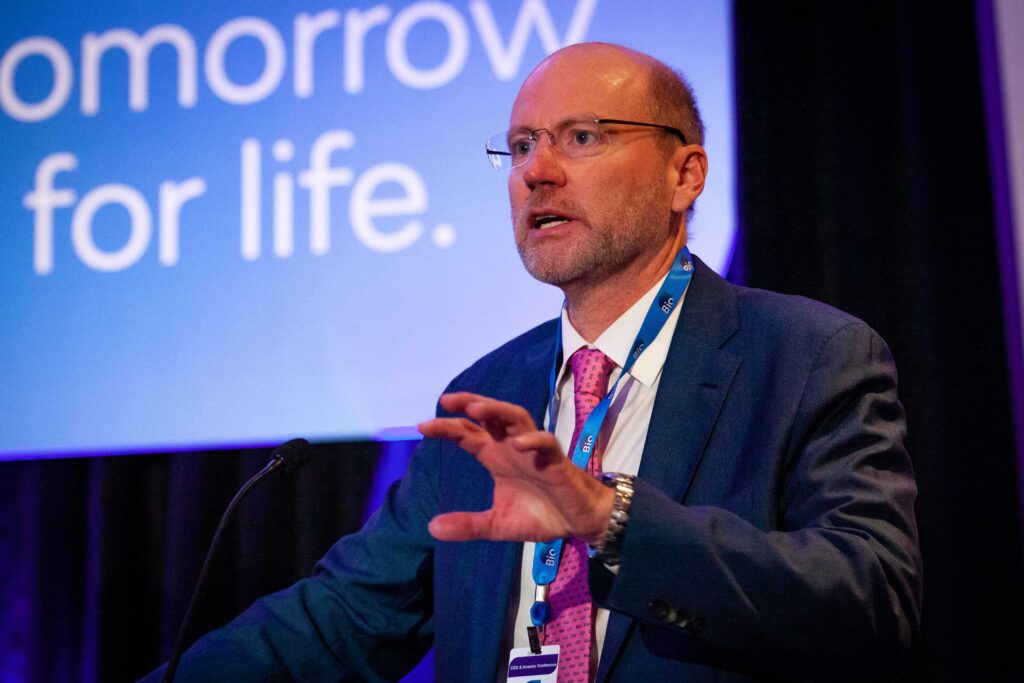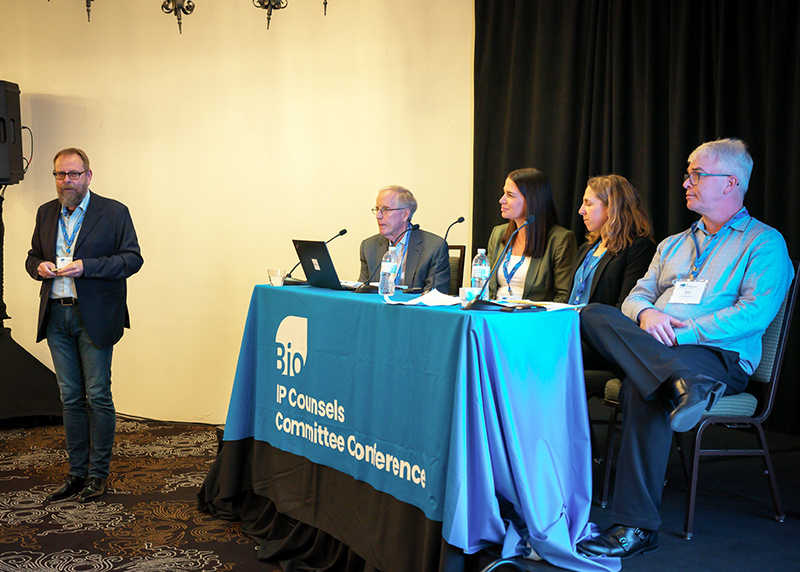The number of new pain drugs in the development pipeline has slowed to a trickle and investment in addiction drugs is low, challenges addressed during an impassioned, collaborative panel, “Resetting the innovation landscape for pain and addiction therapeutics,” yesterday at BIO’s 2023 CEO and Investor Conference.
Panelists discussed potential solutions as they responded to BIO’s recent report, “The State of Innovation in Pain and Addiction,” which describes the issue in detail.
“Clearly there are challenges and risks,” said panel moderator Cindy Steinberg, the National Director of Policy & Advocacy at the US Pain Foundation, “But there is also a tremendous need, as well as tremendous potential reward.”
Report highlights challenges for new pain drugs
BIO’s VP of Industry Research, David Thomas, prefaced the conversation by highlighting the most notable aspects of BIO’s report. “The data we collected is for the last five years. And what we found was shocking,” he said. “Seventy-seven percent of the programs [to develop pain drugs] that were around in 2017 are no longer around [which is a net decline of 44%]. We’ve never seen anything like it in any reports that we’ve ever put together—where you have that big of a change in a therapeutic area in terms of the number of drugs.”
But it wasn’t just the number of drug development programs that panelists found concerning. It was also the rate of success among companies trying to get pain medication, including opioid alternatives, to market. “Our findings here are perhaps the worst we’ve ever seen,” he said. “What we found is that as companies go into their first Phase 1 trial for pain medication, they have less than a one in 100 chance in making it to FDA approval—it’s 0.7% to be exact.”
Further down the pipeline, when companies are ready to bring their product to the FDA, pain medications are still considerably less likely to gain approval than the rest of the market. “The overall industry has a 90% success rate when they file with the FDA,” said Thomas. “For pain medications, the success rate is 57%.”
The FDA is incredibly strict these days when it comes to greenlighting pain medications, in an apparent response to the opioid epidemic. Unfortunately, the current FDA guidance on alternative medications, such as non-opioid analgesics, has been called “inadequate” by the industry, as Bio.News has reported.
“One of the complaints we had from companies is that they wanted more clarity and confidence that what they were proving in their phase three studies would actually be what would qualify for an approval,” said Thomas during a one-on-one interview. “They also want more clarity on how they can actually get the clinical trials designed in a way that will make them more successful.”
Investment in drugs for addiction
When it comes to investment in combatting addiction, the numbers are a bit more complex.
“There’s simply not much money going in [to pain and addiction therapy development overall],” said Thomas. “And this is an issue because there is a very big unmet need. By some estimates, the total cost to the United States for pain and addiction combined is $3-4 trillion. We’re talking about economic costs. We’re talking about those that are out of work due to pain. We’re talking about law enforcement for the opioid crisis. When you combine everything, we have a very big issue on our hands, and the money is not coming in for investments.”
Yet, the NIH had already taken some steps to start dealing with addiction before the pandemic in 2018. “We had the NIH start the HEAL program to help companies translate molecules that are non-addictive for pain. We also had the passing of the SUPPORT Act to give the FDA new authorities to combat the opioid crisis,” Thomas said. “There was a lot of activity back in 2018. So what’s happened to the pipeline?”
According to the report, “the clinical pipeline for addiction therapeutics increased 34%” in the last five years. “The addiction pipeline now consists of 39 clinical-stage drug programs vs. 29 five years ago. However, the majority of drug programs (77%) target previously approved pathways. There are only eight drug programs with novel chemical entities specific to treating Opioid Use Disorder.”
Another notable factoid: “Venture investment into companies with novel addiction drug programs over the last 10 years is estimated at $130 million, 270 times less than oncology.”
Panelists see a need
The panel’s response to the report was unified: There was no doubt about the need and the complexities of the situation. Yet, most importantly, the panelists agreed that it is imperative for industry, science, business, regulatory agencies, and everyone in between, to collaborate closely to meet the need.
“Because of progress in neuroscience, we know that chronic pain is a disease itself of the nervous system and brain,” said panel moderator Steinberg. “The number of Americans who are living with chronic pain is staggering. The CDC and the National Center for Health Statistics have found that there are 50 million Americans, or 20% of the American adult population, living with chronic pain. Yet, there is a dearth of effective options, particularly for severe pain and especially since opioids have largely been removed from the table.”
Real experience backs up the numbers, according to panelist Hernan Bazan, MD, CEO and Co-Founder of South Rampart Pharma. “This is the problem that I see clinically every day as a practicing physician and surgeon,” he said. “This is not some theoretical issue, it’s not a market report, it’s not an issue of looking at returns and so on. It’s a real problem.”
A major issue with pain is that no two kinds of pain are created alike, panelists noted. Chronic pain is different from acute pain. Long-term pain is different from short-term pain. And the psychological element of how a patient feels their pain has only relatively recently begun to be investigated in earnest.
“One of the major challenges [with developing pain medications is that relief is] a subjective endpoint. When you’re thinking about clinical trials run for chronic pain, [you have to remember that, for patients,] some days you feel better than other days,” said Emily Caporello, Program Director at the National Institutes of Health (NIH). “When you’re looking at specific endpoints for a particular time frame and couple that with the need for controls in a clinical trial study, that system doesn’t reflect real life. I think that is one of the fundamental challenges when it comes to translating from preclinical to clinical. And I think that this is where drug manufacturers, as well as regulatory bodies, as well as basic science, really need to rally together and think about the totality of evidence.”
“I think it’s going to take an all hands on deck approach,” said Bazan, “Which means incorporating academic lab innovation, especially when they’re clinically validated mechanisms of actions (things that we know should work in the clinic), as well as partnership with strategic partners and pharma, along with VC backing.”




